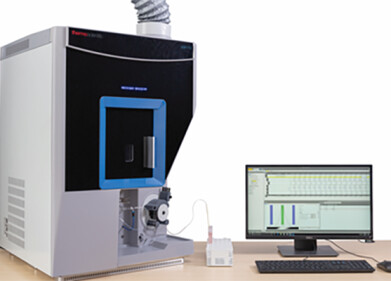Mass Spectrometry & Spectroscopy
How Does Protein Purification Work?
Jul 25 2021
From drug discovery and development to infectious disease research, protein purification is fundamental to the life sciences. The process involves isolating one or more proteins from the original source, based on differences in their structural and biological properties.
Not only does protein purification allow scientists to analyse individual proteins, it’s also a fundamental step for observing how a protein interacts with other proteins, as well as how its affected by enzymes, DNA, RNA and other proteins. As well as separating proteins from the original sample, purification methods can also be used to separate target proteins from other proteins.
Isolating protein from the original source
Original sources are generally complex and can include cells, bacteria, tissues and other living organisms. For example, scientists estimate the human proteome is made up of between 10,000 and several billion different proteins. While the number varies enormously, science does prove that all proteins are built using the same 20 amino acids. Variations in sequence, structure and shape are what give a protein its unique characteristics.
Creating a pure, contaminant free sample
With hundreds, thousands and even billions of different proteins to navigate in a single sample, protein purification can be incredibly complex. The underlying goal is to eliminate as many contaminants as possible and create a sample that’s pure and indicative of the target protein. As well as size, structure and amino acid sequence, protein purification factors in variations in binding affinity, physiochemical properties and biological activity. The final result is known as the protein isolate and should be an accurate representation of the target protein.
Developing purification strategies
Maintaining the integrity of the protein is essential when developing a purification strategy. After undergoing purification processes, the protein must be suitable for downstream applications and analysis. The protein must be free from contaminants and retain its original folded structure. A protein that has started to unfold and lose its original shape can compromise results. It’s also important to purify proteins under stable conditions, as variables like pH levels and temperature can promote degradation.
Storing proteins in a buffer solution is an effective way to prevent degradation. Made up of a conjugate acid/base pair, the buffer eliminates the risk of pH level changes that could compromise the stability and function of a protein sample.
While Mass Spectrometry is considered a best-in-class protein purification and analysis method, new techniques like Trapped Ion Mobility Spectrometry (TIMS) are becoming mainstays in contemporary laboratories. Find out more in ‘Deep characterisation and quantitative analysis of proteins and post-translational modifications - How TIMS has extended the capabilities of MS and shown considerable potential for improving PTM identification and critical understanding of sign.’
Digital Edition
Lab Asia 31.2 April 2024
April 2024
In This Edition Chromatography Articles - Approaches to troubleshooting an SPE method for the analysis of oligonucleotides (pt i) - High-precision liquid flow processes demand full fluidic c...
View all digital editions
Events
May 05 2024 Seville, Spain
InformEx Zone at CPhl North America
May 07 2024 Pennsylvania, PA, USA
May 14 2024 Oklahoma City, OK, USA
May 15 2024 Birmingham, UK
May 21 2024 Lagos, Nigeria
.jpg)



.jpg)













